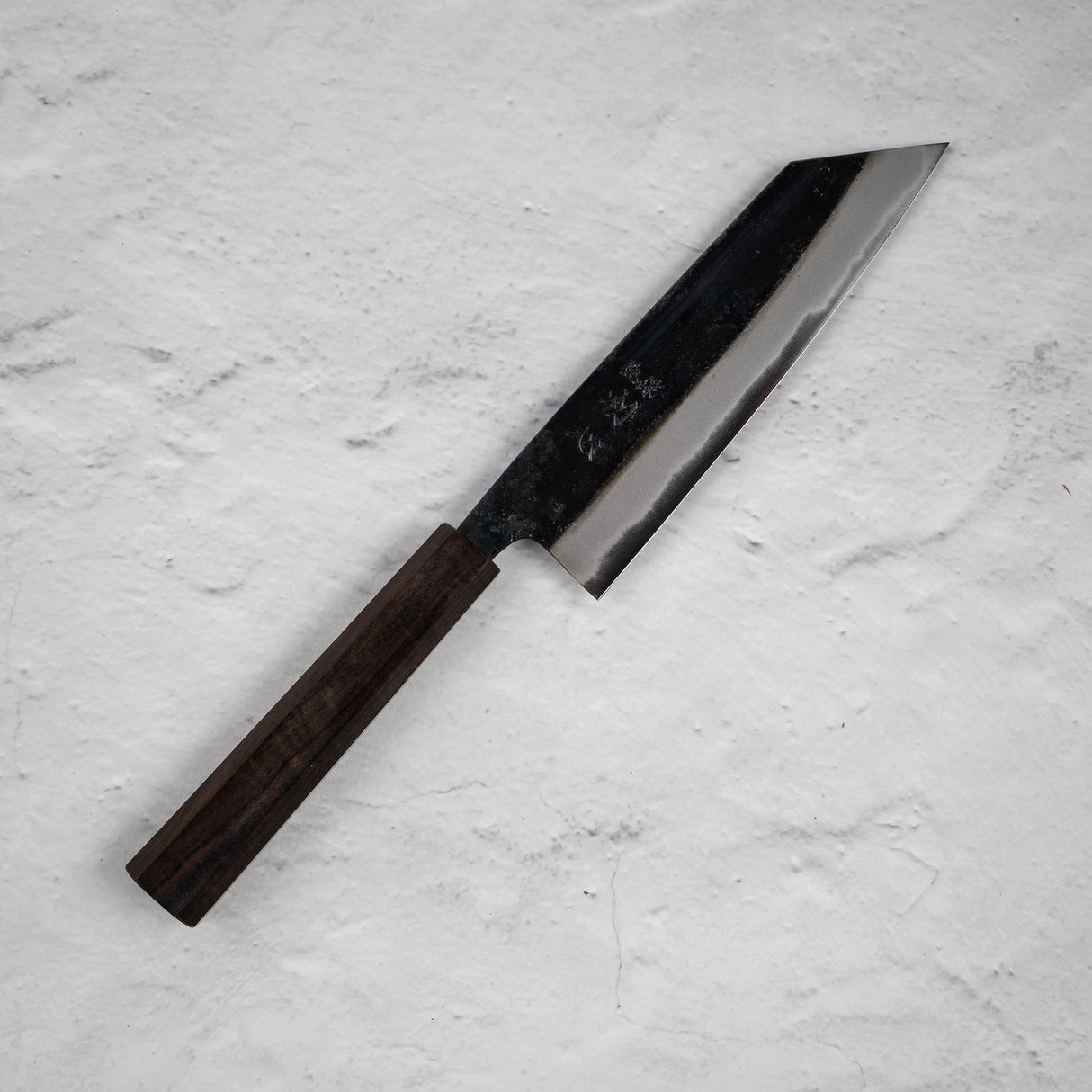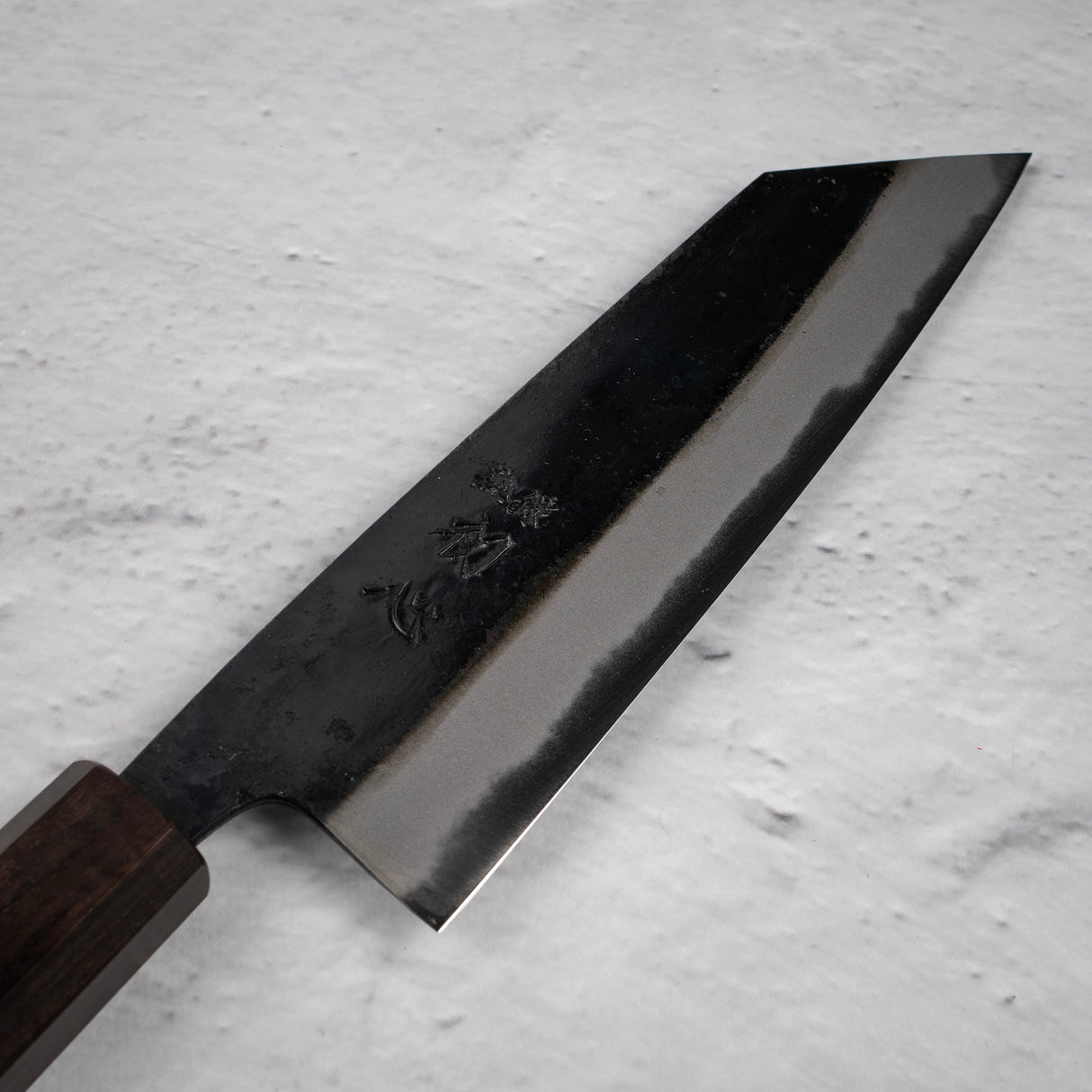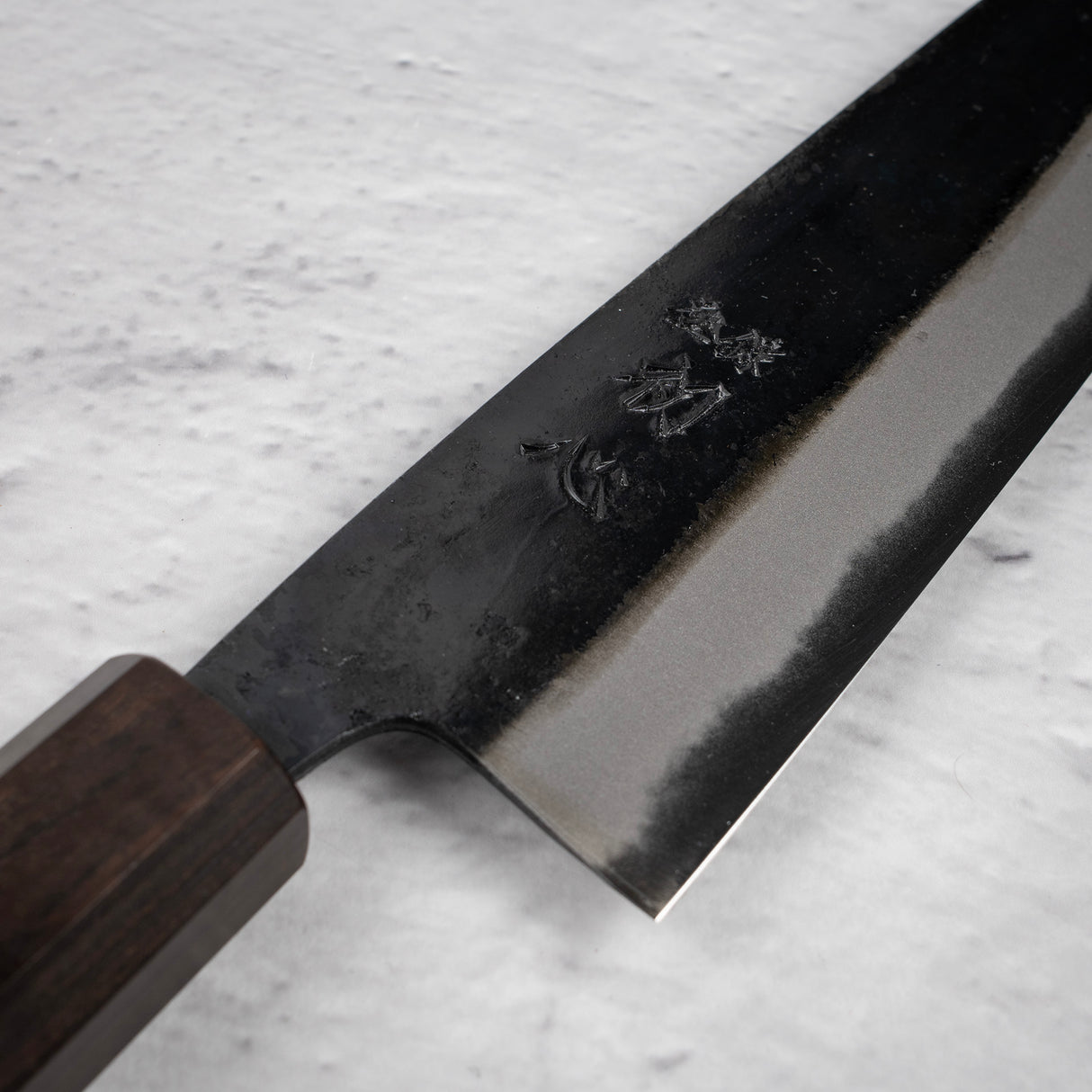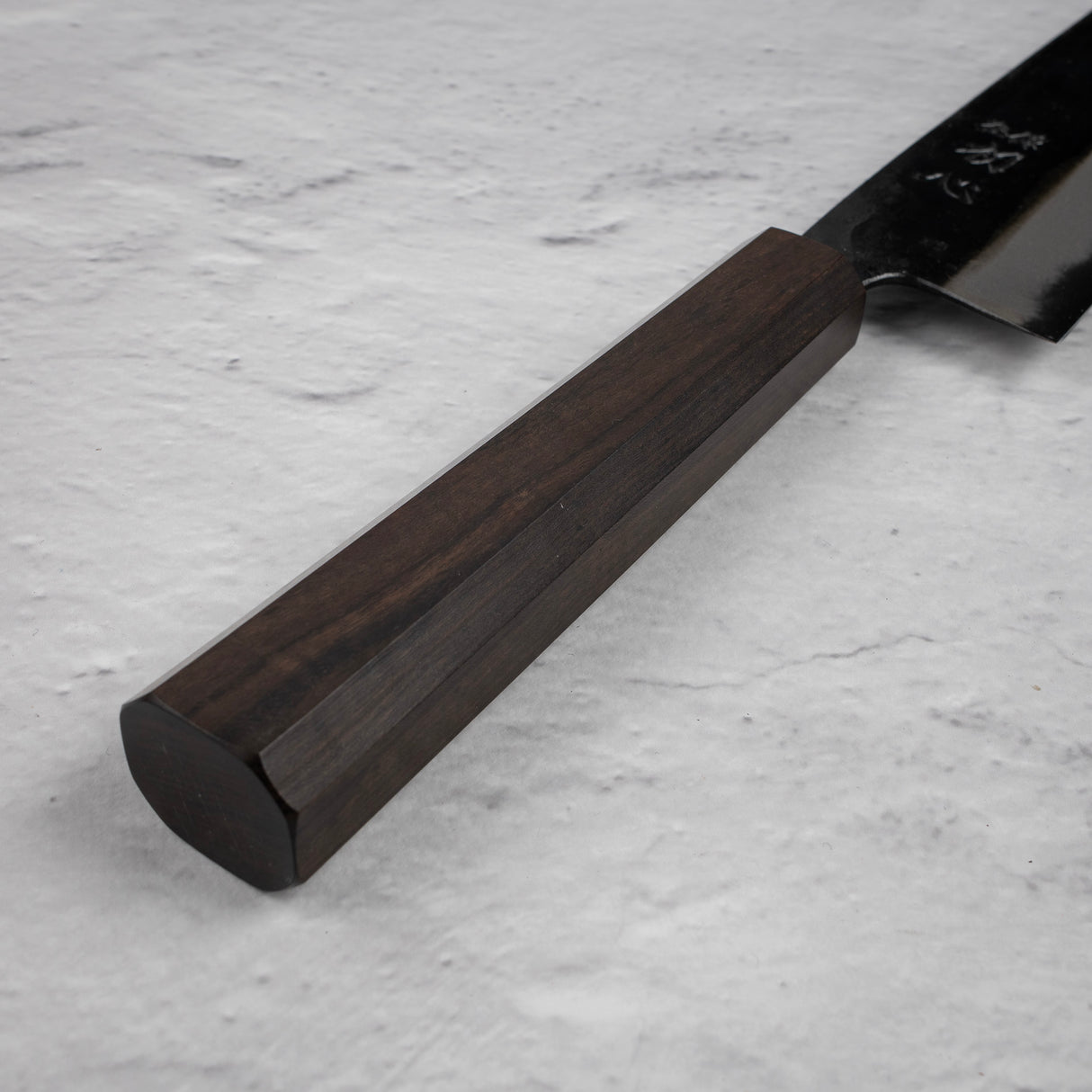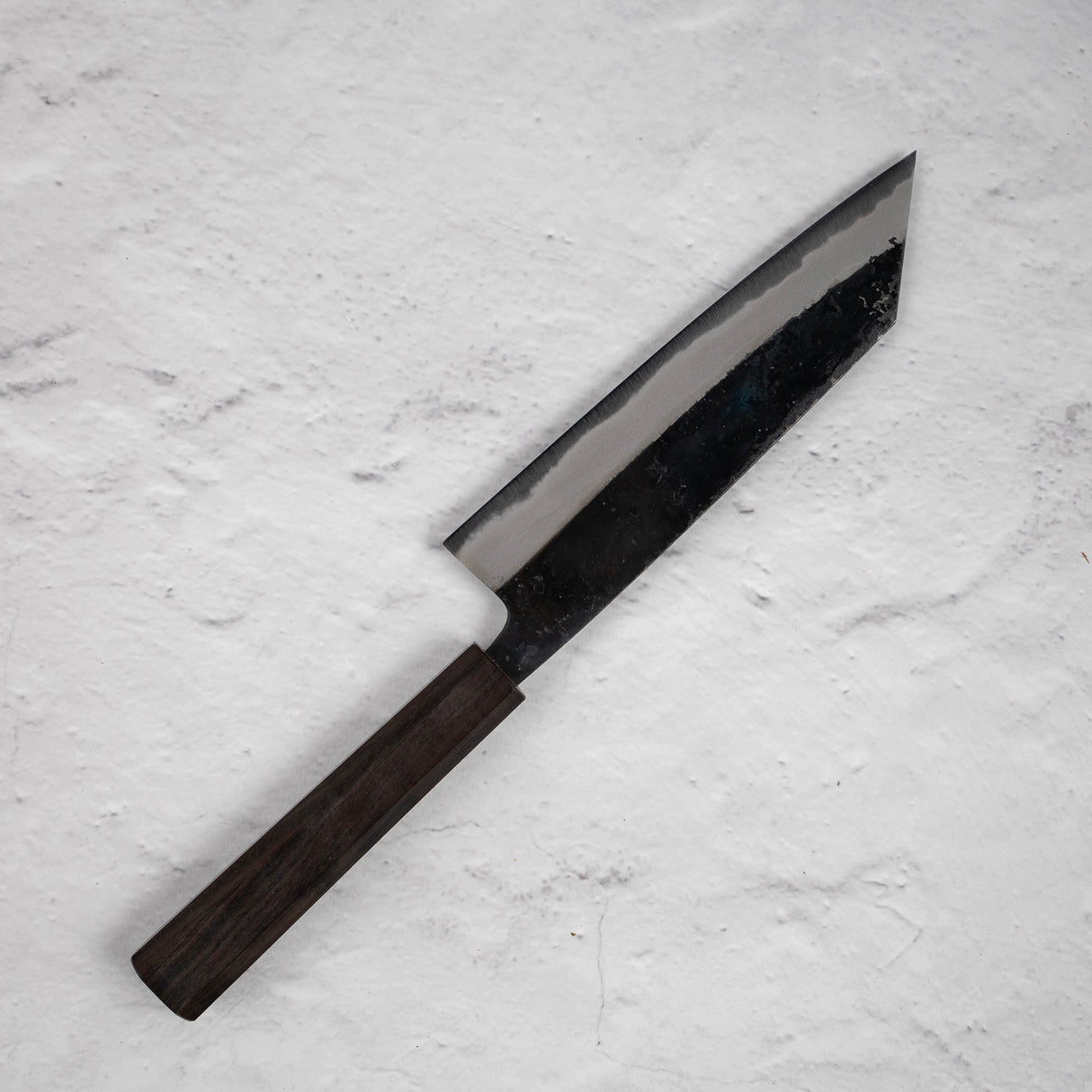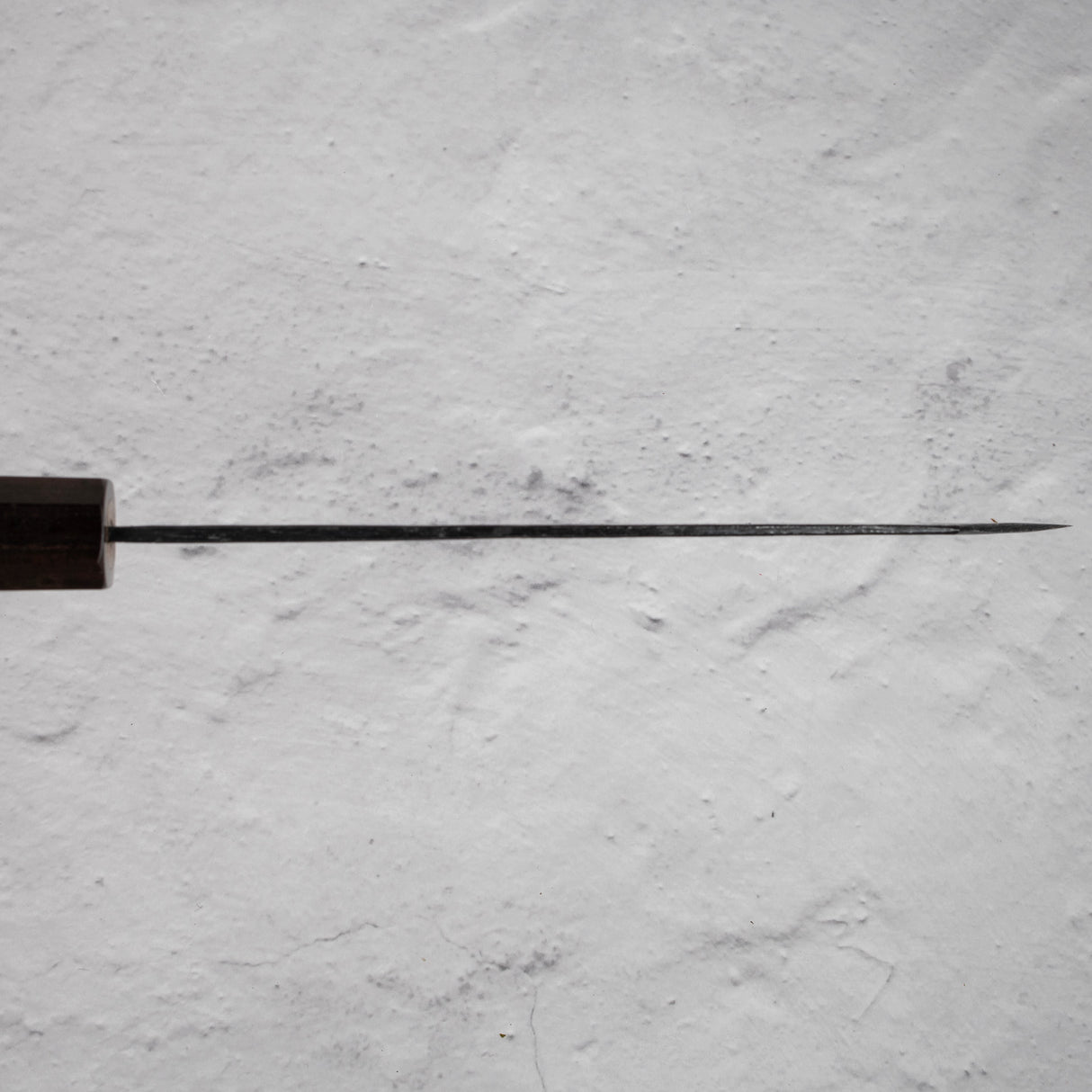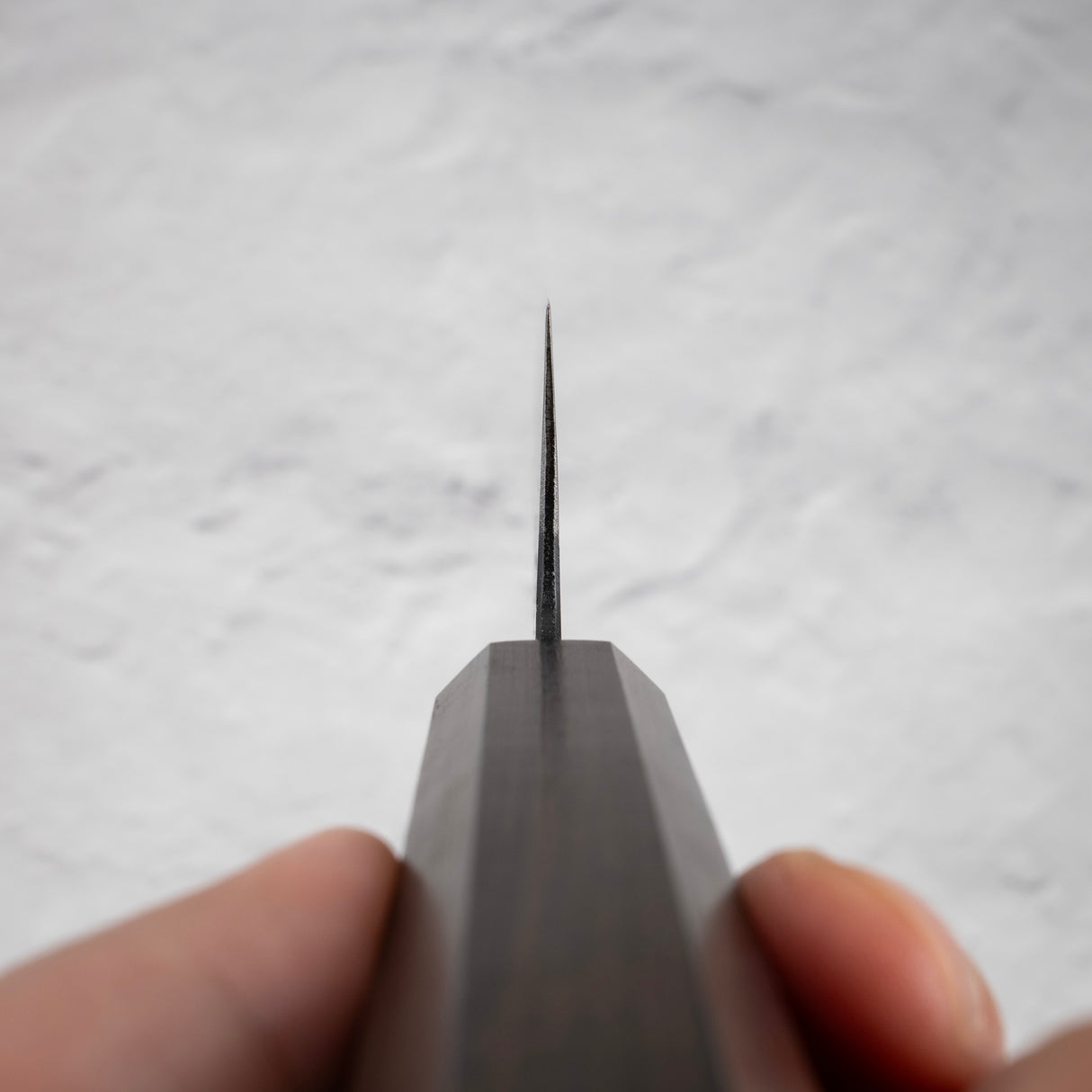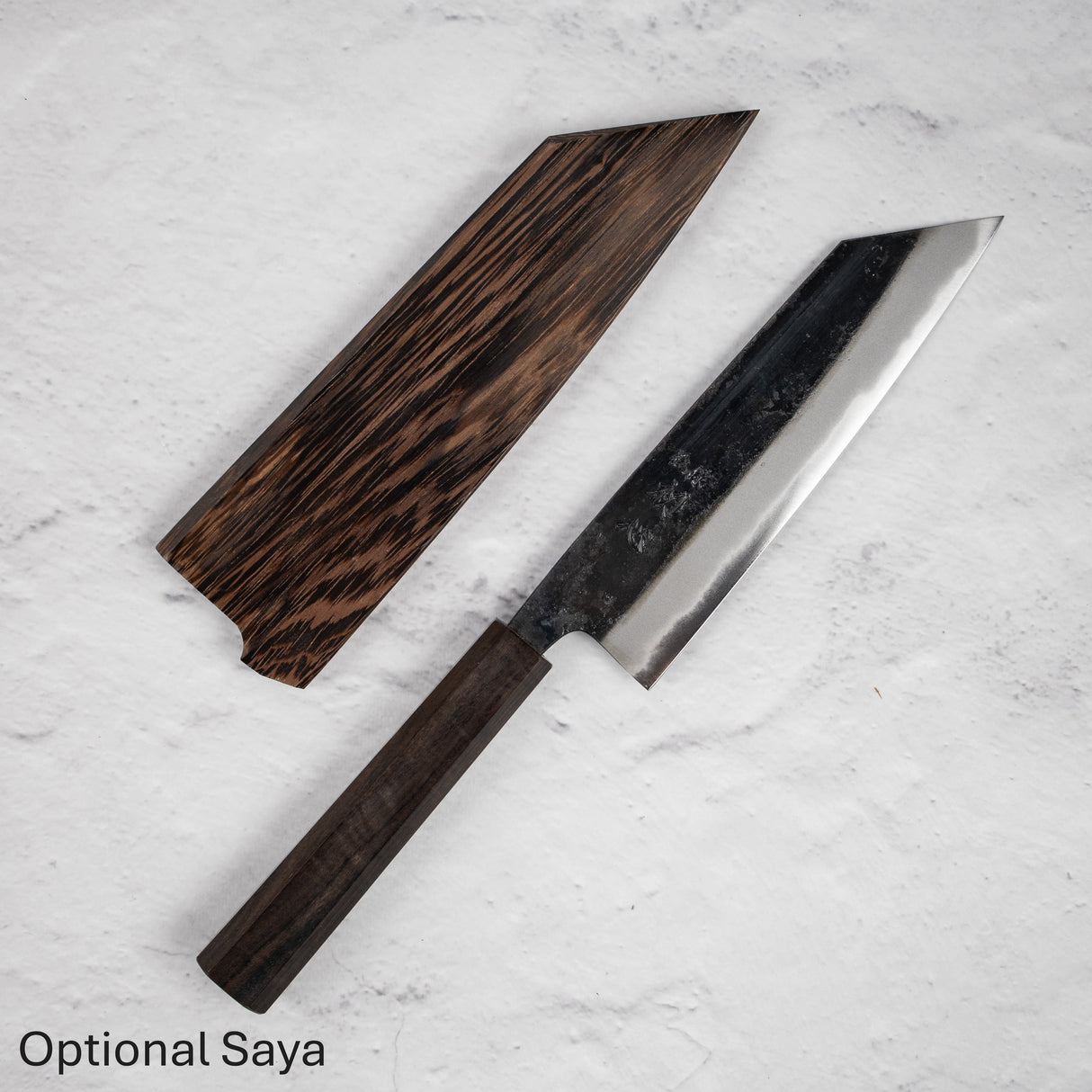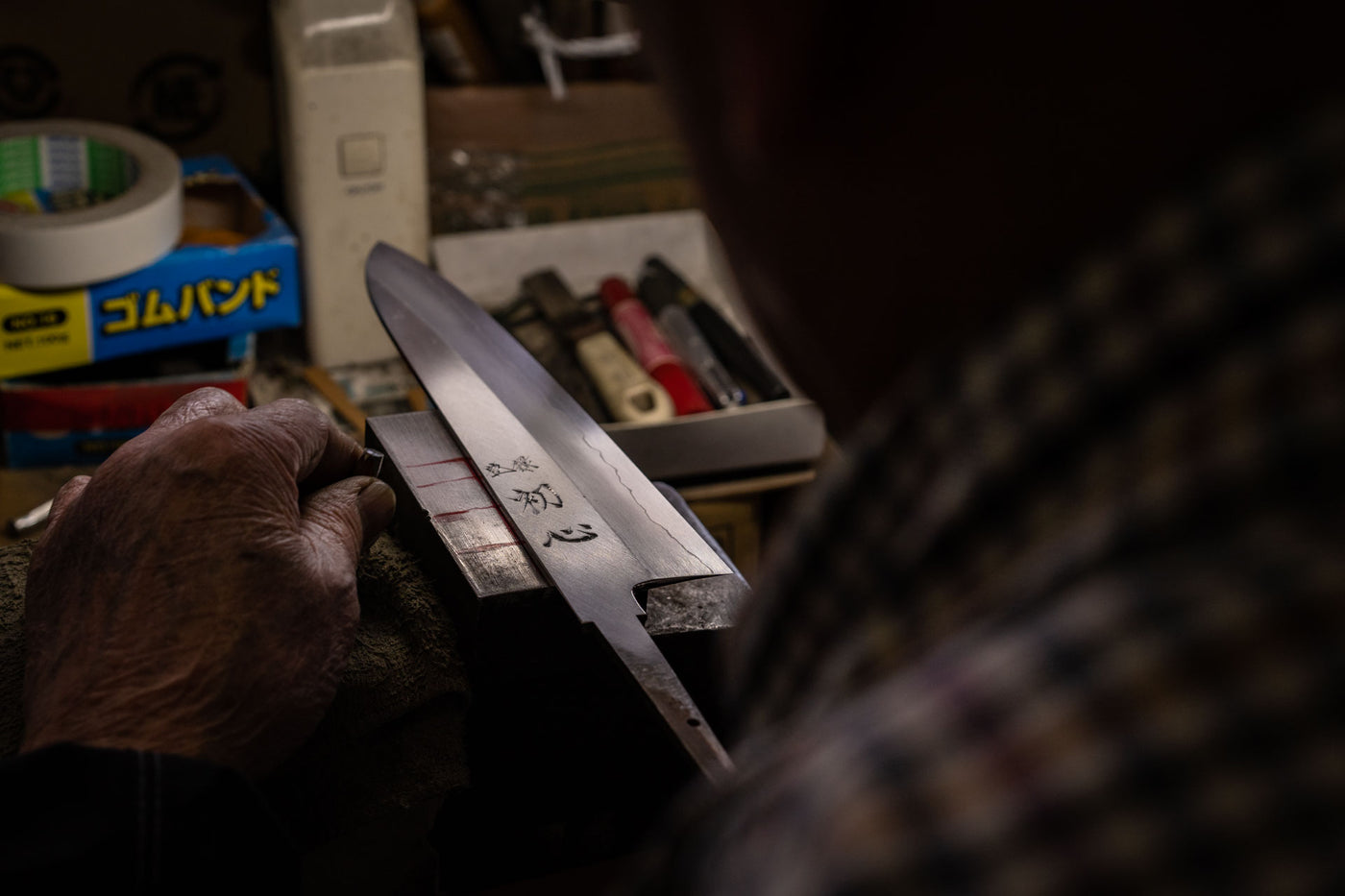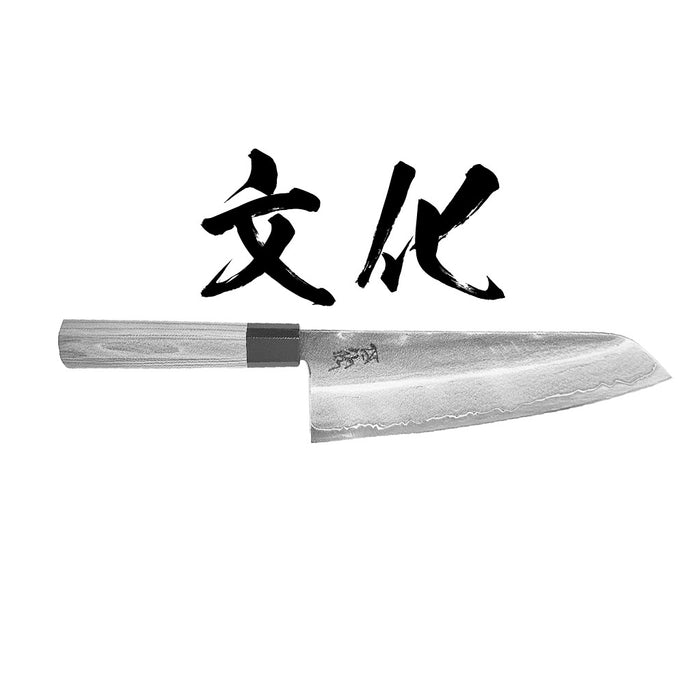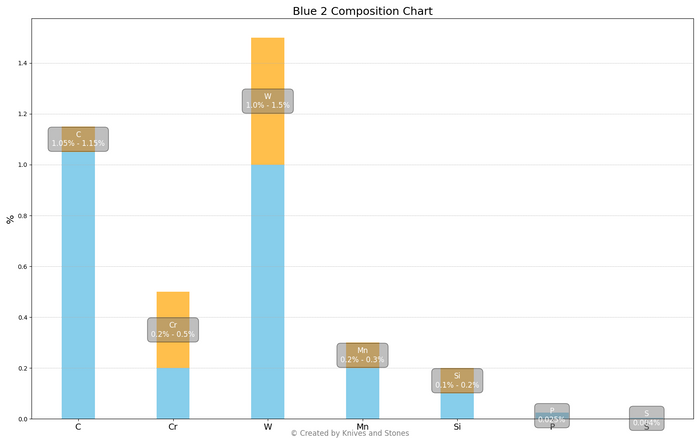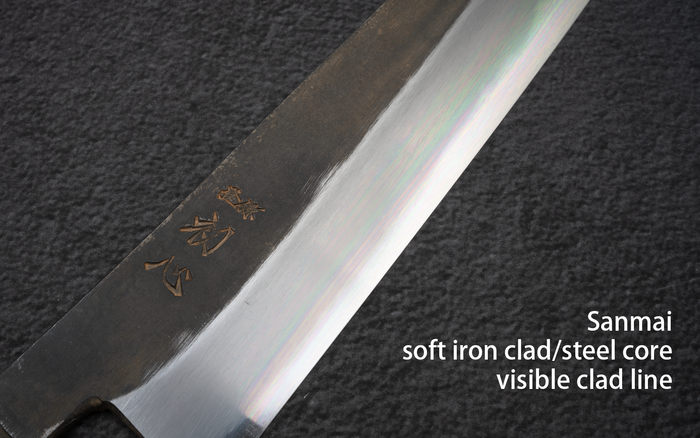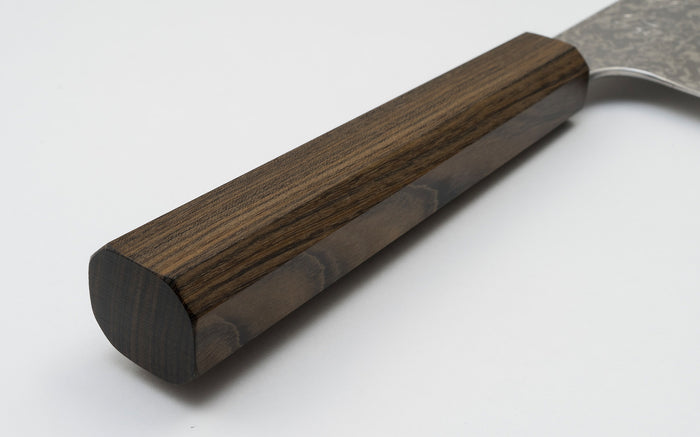Hatsukokoro | 庫存單位:
HTSU_B2KU_SKK_BU165
初心四國 Blue 2 黑內文化 165mm 烏木手柄
售價
$2,504.00
正常價格
$3,546.00
單價
/
不可用
初心四國 Blue 2 黑內文化 165mm 烏木手柄 已缺貨,一旦有貨就會出貨。
無法載入取貨日期
Detailed Specifications
| Line | 初心漆黑青二黑口 |
| Profile | 文化刀 |
| Bevel Type | 雙斜面 |
| Weight | 157 g | 5.5 oz |
| Edge Length | 174 mm | 6 27/32″ |
| Heel Height | 44 mm | 1 47/64″ |
| Width @ Spine | 3.0 mm | 1/8″ |
| Width @ Mid | 1.2 mm | 3/64″ |
| Width @ 1cm from Tip | 1.3 mm | 3/64″ |
| Steel | 青二 / 青紙二號 | 碳鋼 |
| Blade Construction | 三枚夾-軟鐵夾鋼 |
| Hardness (HRC) | 61 - 63 |
| Surface Finish | 黑打 |
| Handle | 八角黑查卡特木 |
| Region | 兵庫 |
| Best for |
|

| Pros | Cons |
|
|
|
Care Instruction
- Don't cut hard things! Japanese knives are brittle so bone hacking is a NO NO!
- Wash with neutral detergent after use, and wipe dry;
- Please don't wash knife with dishwasher, it will damage the wood handle;
- Be careful not to leave the knife close to a heat source for a long time;
- It is a lot more dangerous to cut with a blunt knife than a sharp knife!
- It is best to sharpen a Japanese knife regularly on a waterstone. Error: Steel nature unknown

